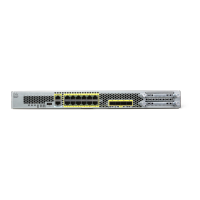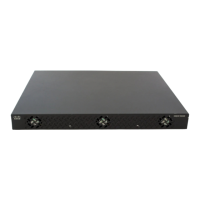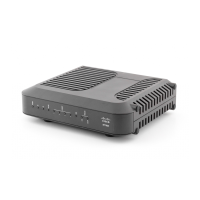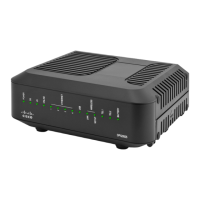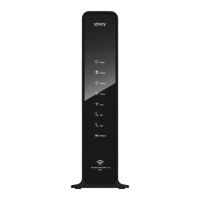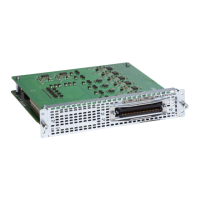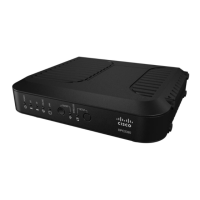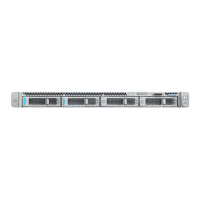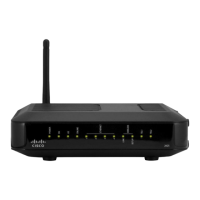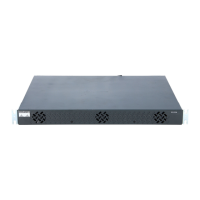1. Outside Interface Address—This interface is typically the internet gateway, and might be used as
your manager access interface. You cannot select an alternative outside interface during initial device
setup. The first data interface is the default outside interface.
If you want to use a different interface from outside (or inside) for manager access, you will have to
configure it manually after completing the setup wizard.
Configure IPv4—The IPv4 address for the outside interface. You can use DHCP or manually enter
a static IP address, subnet mask, and gateway. You can also select Off to not configure an IPv4 address.
You cannot configure PPPoE using the setup wizard. PPPoE may be required if the interface is
connected to a DSL modem, cable modem, or other connection to your ISP, and your ISP uses PPPoE
to provide your IP address. You can configure PPPoE after you complete the wizard.
Configure IPv6—The IPv6 address for the outside interface. You can use DHCP or manually enter
a static IP address, prefix, and gateway. You can also select Off to not configure an IPv6 address.
2. Management Interface
You will not see Management Interface settings if you performed intial setup at the CLI.
The Management interface settings are used even though you are enabling the manager access on a
data interface. For example, the management traffic that is routed over the backplane through the data
interface will resolve FQDNs using the Management interface DNS servers, and not the data interface
DNS servers.
DNS Servers—The DNS server for the system's management address. Enter one or more addresses
of DNS servers for name resolution. The default is the OpenDNS public DNS servers. If you edit the
fields and want to return to the default, click Use OpenDNS to reload the appropriate IP addresses
into the fields.
Firewall Hostname—The hostname for the system's management address.
b) Configure the Time Setting (NTP) and click Next.
1. Time Zone—Select the time zone for the system.
2. NTP Time Server—Select whether to use the default NTP servers or to manually enter the addresses
of your NTP servers. You can add multiple servers to provide backups.
c) Select Start 90 day evaluation period without registration.
Do not register the threat defense with the Smart Software Manager; all licensing is performed on the
management center.
d) Click Finish.
e) You are prompted to choose Cloud Management or Standalone. For management center management,
choose Standalone, and then Got It.
Step 5 (Might be required) Configure the Management interface. See the Management interface on Device >
Interfaces.
The Management interface must have the gateway set to data interfaces. By default, the Management interface
receives an IP address and gateway from DHCP. If you do not receive a gateway from DHCP (for example,
you did not connect this interface to a network), then the gateway will default to data interfaces, and you do
not need to configure anything. If you did receive a gateway from DHCP, then you need to instead configure
this interface with a static IP address and set the gateway to data interfaces.
Cisco Firepower 2100 Getting Started Guide
56
Threat Defense Deployment with a Remote Management Center
Pre-Configuration Using the Device Manager
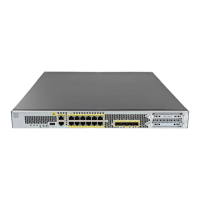
